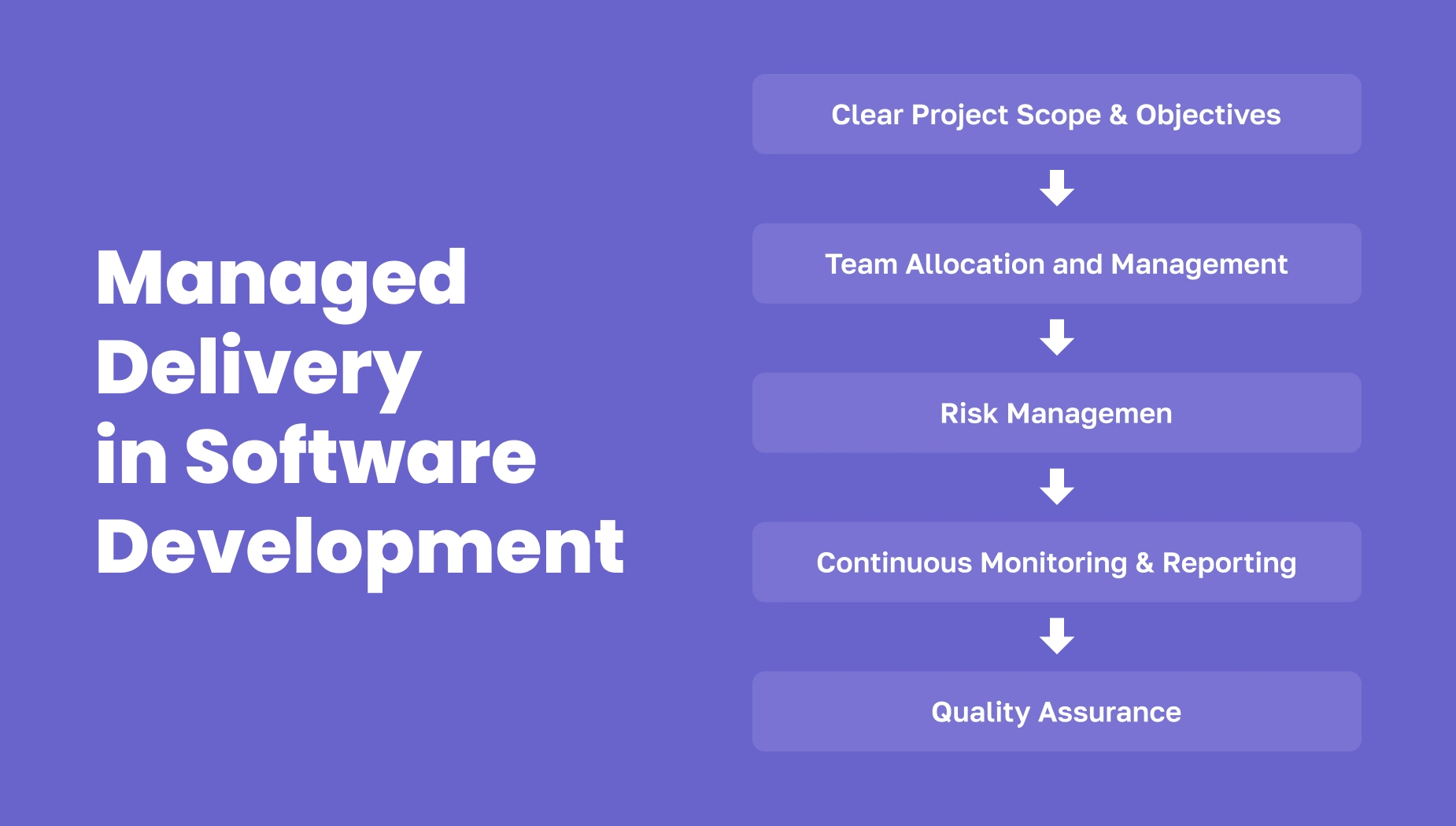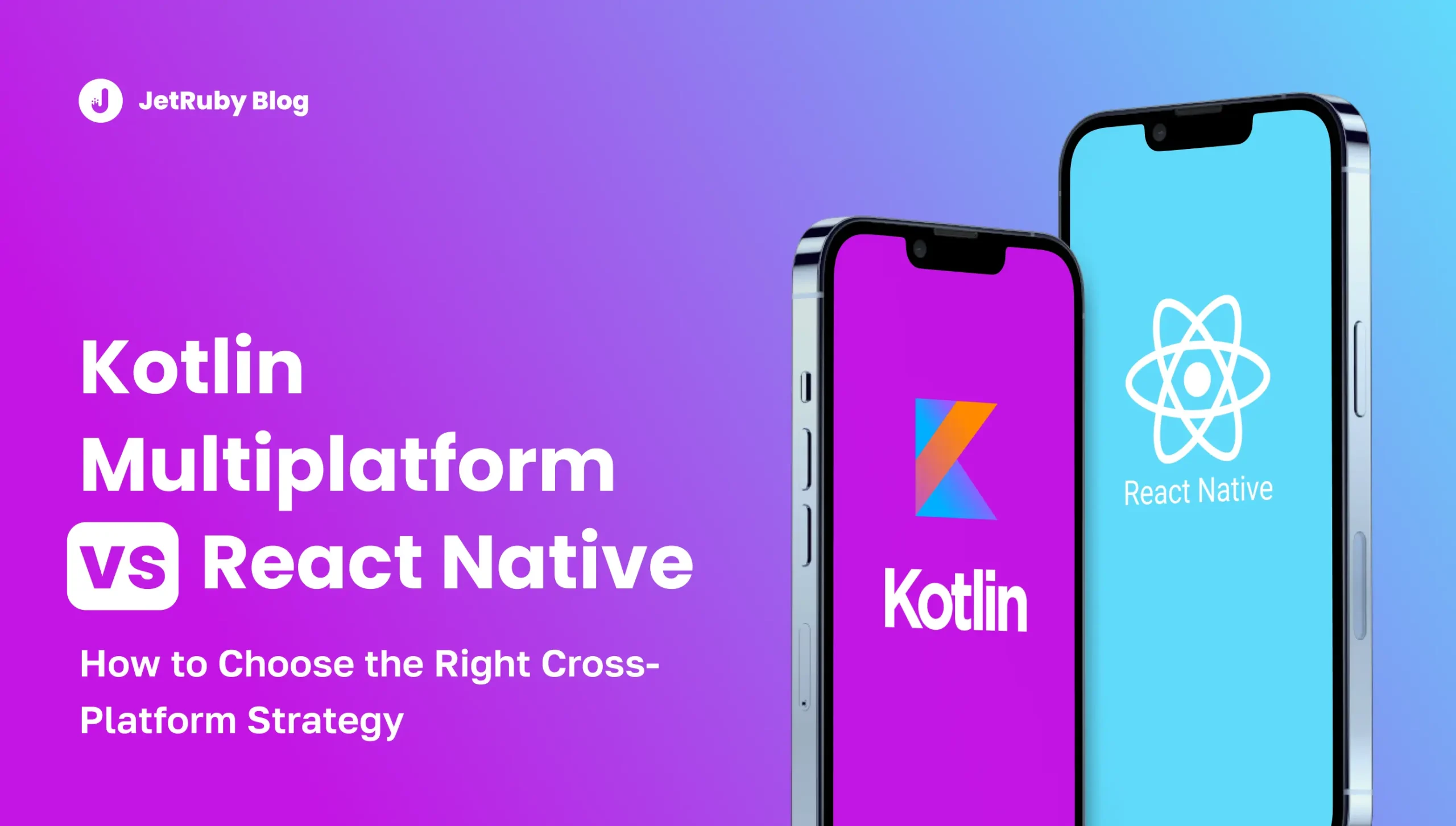Table of Contents
Choosing the right delivery model is key to ensuring project success. Various software delivery models present distinct advantages tailored to the specific requirements. Traditional models like Waterfall emphasize linear, sequential phases, while Agile focuses on iterative development, and DevOps integrates development and operations for continuous delivery. Although these models vary in approach, they all require effective organization and management to achieve successful outcomes.
What is Managed Delivery?
The Software Delivery Management (SDM) model is transforming modern software development. Unlike traditional delivery models that often rely on fragmented processes and isolated teams, SDM unifies all facets of the software delivery pipeline into a cohesive, transparent system. This model integrates data from every stage of development, from back-office operations to the delivery toolchain, offering organizations a holistic view of the software in progress and its business impact.
The SDM model proves particularly valuable for breaking down silos within organizations, facilitating better collaboration, and enabling more informed decision-making. By centralizing access to real-time data, SDM ensures that all teams – from development to operations – are aligned on project objectives, timelines, and business goals. Additionally, SDM tools allow companies to optimize and adapt their software to meet market demands. This comprehensive and integrated approach ensures the delivery process is streamlined, efficient, and geared toward driving business growth.
In Managed Delivery, a specialized team or vendor takes full responsibility for delivering a project or specific outcomes, overseeing every aspect of the development process. This model ensures that projects meet deadlines, remain within scope, and adhere to the budget while maintaining high-quality standards. Through diligent management of planning, execution, monitoring, and communication, Managed Delivery offers a structured and accountable approach to software development, providing clients with assurance and optimal results.
How It Works
- Clear Project Scope and Objectives
The first step involves defining the project scope, deliverables, and objectives in collaboration with the client. This helps align expectations and establish key milestones. - Team Allocation and Management
A dedicated team – including project managers, developers, testers, and quality assurance specialists – oversees day-to-day operations to ensure smooth progress. Often, the team may also include external consultants or experts, depending on the project’s complexity or industry-specific requirements. - Risk Management
Managed Delivery identifies and mitigates risks early in the development. Regular assessments and contingency planning prevent issues from escalating, safeguarding quality and timeline. This includes both technical risks and business risks that may impact project outcomes. - Continuous Monitoring and Reporting
The Managed Delivery team updates the client on the project’s progress. This ensures transparency and allows for timely adjustments to stay on track. Tools like project management software and dashboards offer real-time updates on key performance indicators (KPIs). - Quality Assurance
Built-in quality control processes ensure thorough testing at every phase, reducing defects and improving overall product quality. Automated testing tools and continuous integration practices enhance efficiency and accuracy in testing.
Benefits of Managed Delivery
- Risk Reduction
By proactively managing potential risks, Managed Delivery helps avoid delays, budget overruns, and quality issues. The model also ensures compliance with industry standards and regulations, reducing legal and operational risks. - Improved Quality
Dedicated teams and continuous testing guarantee that the software meets high standards and functions as intended. - Adherence to Deadlines and Finances
The structured approach, along with careful monitoring, keeps projects on schedule and within budget, minimizing unexpected costs or delays. This also enables clients to optimize resource allocation and maintain operational efficiency during project execution.
The Role of the Service Delivery Manager
In the Managed Delivery model, the Service Delivery Manager’s (SDM) primary role is overseeing the entire delivery process.
Key responsibilities include:
- Client Communication
Maintaining transparent communication between the client and team, ensuring feedback is integrated into the development process. - Project Oversight
Monitoring progress, addressing issues, and ensuring adherence to scope, timelines, and budget. This includes reviewing tickets, coordinating changes, and informing stakeholders through status updates. - Risk Management
Identifying and mitigating risks, managing incidents, and leading root cause analysis to prevent recurrences. - Quality Assurance
Ensuring deliverables meet quality standards by working with testing teams and reviewing communications for consistency. - Resource Management
Managing time, staff, and tools efficiently, including administrative tasks like timecards, PTO, and onboarding new clients. They also coordinate cross-functional resources when needed. - SLA Adherence
Ensuring service delivery meets SLAs and developing KPIs to improve performance and client retention. - Team Leadership
Recruiting, developing staff, and fostering a collaborative environment aligned with company goals.
In larger teams, the SDM may engage in higher-level responsibilities like model design, labor analysis, and strategic planning to optimize operations and drive growth.
Team Augmentation as an alternative
In addition to the Managed Delivery model, businesses may opt for Team Augmentation as a flexible staffing solution. Team Augmentation enables companies to scale their development capacity by integrating external experts into their existing teams.
This model offers several key advantages:
- Scalability
Quickly adjust the number of team members based on project requirements. - Cost Efficiency
Access specialized talent without incurring the overhead costs of full-time employees. - Skill Gap Bridging
Obtain niche skills that may not be available in-house.
Although Team Augmentation provides valuable flexibility, it requires close collaboration between in-house teams and external resources to ensure project objectives and workflows align.
Team Augmentation vs. Managed Delivery
Team Augmentation differs from Managed Delivery in that the client retains control over project management and strategy, while external experts fill specific skill gaps. In contrast, Managed Delivery transfers full responsibility for project execution and outcomes to the vendor. This distinction makes Managed Delivery ideal for companies seeking a more hands-off approach, whereas Team Augmentation is suited for those needing to strengthen internal teams with external expertise.
The JetRuby Approach to Managed Delivery
At JetRuby, we prioritize the Managed Delivery model, offering a comprehensive solution for clients who need professional management for their software development projects. This approach enables us to provide a high-caliber team of specialists and the management expertise required to oversee and guide the project. The Managed Delivery model is our preferred method of collaboration, and we consistently recommend it to clients seeking efficient and reliable project outcomes.
What is Managed Delivery at JetRuby?
The Managed Delivery model provides the client with a development team and project management, expertly handled by JetRuby. Unlike traditional outsourcing or staff augmentation models, we take full responsibility for the team’s performance and the project’s success. This includes setting strategy, managing the team, and ensuring the project is completed on time, within budget, and to the highest quality standards.
One of the core benefits of this model is that we adapt the team structure based on the client’s budget and business goals. While we develop software for the client, our management team adjusts resources as needed, making the entire process more flexible and cost-effective. There are no separate rate cards for different team member levels; instead, we offer a flat hourly rate, making the cost structure straightforward for clients.
Moving Beyond Traditional Outsourcing
JetRuby’s Managed Delivery approach transcends traditional outsourcing models by providing a professional service that ensures complete project management and delivery responsibility. Our focus is on delivering results rather than simply offering temporary team extensions. By partnering with us, clients can focus on their core business, while we take care of every aspect of the development process.
CTO Co-Pilot and CTO as a Service
We offer two key products as part of our managed delivery services: CTO Co-Pilot and CTO as a Service.
These solutions are designed for companies that require varying levels of technical leadership and expertise:
- CTO Co-Pilot is perfect for companies with a Chief Technology Officer (CTO) who require additional support to manage their tech stack more efficiently. The role of the CTO Co-Pilot is typically played by an experienced technology expert or a dedicated team provided by a service provider. This individual or team understands technology management, development processes, and industry best practices. They work alongside the company’s CTO to offer guidance, operational support, and strategic insight, helping manage the tech stack, optimize workflows, and align the technical direction with business objectives.
- CTO as a Service is tailored for companies without an in-house CTO. This service provides an outsourced CTO who takes on the full responsibilities of a Chief Technology Officer without needing to hire someone permanently. JetRuby provides full IT leadership, offering our expertise in managing development teams, setting technology strategies, and ensuring the project aligns with the company’s broader business objectives.
The base cost of these services is 30% of the development team’s cost, covering essential roles such as Delivery Manager, Team Lead (serving as CTO), Business Analyst (BA), and UI/UX Designer. As the team expands, the client’s cost decreases proportionally, though it will not fall below 20% of the total project cost.
Why Choose JetRuby’s Managed Delivery?
JetRuby’s Managed Delivery model is designed for clients who value high-quality results and reliable project management. By handling both the development and management of the team, we ensure a seamless and accountable process from start to finish. This model allows us to be fully responsible for achieving project goals while offering the flexibility to adjust the team structure to meet budget and business needs.
Whether you seek technical leadership through our CTO solutions or require an expert team, JetRuby’s Managed Delivery approach guarantees that your software development goals are achieved efficiently and effectively.
The Value of Managed Delivery in Software Development.
At JetRuby, we offer both Team Augmentation and Managed Delivery models, allowing clients to choose the best fit for their goals. The Managed Delivery model provides clear benefits by handling full project management and execution, allowing businesses to focus on core objectives while we ensure timely, high-quality results.
This approach offers flexibility and accountability, ensuring projects meet deadlines, budgets, and quality standards. Clients develop the strategy, and our team manages the rest. With services like CTO Co-Pilot and CTO as a Service, Managed Delivery drives efficiency, reduces risk, and supports business growth.




